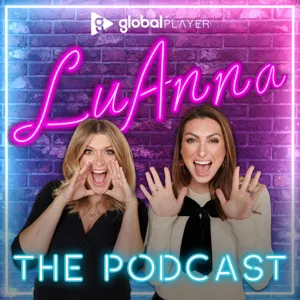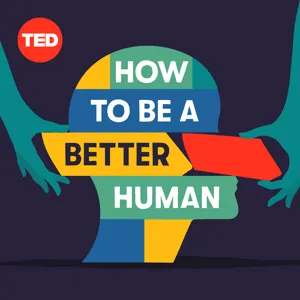Podcast Summary
Explore the diverse world of podcasts: Discover news, education, mental health resources, and fun through podcasts for all ages and interests
Podcasts offer a diverse range of content for all ages and interests. John Stewart is back with The Daily Show Ears Edition, providing news and exclusive interviews. For kids, Lingokids offers educational and interactive episodes. Therapy For Black Girls focuses on mental health and personal development. MTV's official challenge podcast covers reality TV competitions. And Stuff to Blow Your Mind explores scientific phenomena. Additionally, children's toys can even elicit a parent's attentive response through whining, demonstrating the deep-rooted human instinct to pay attention to certain sounds. So, whether you're looking for news, education, mental health resources, or just plain fun, there's a podcast out there for you. Listen and learn, explore, and engage with the vast world of podcasts.
Understanding the Science of Whining: Whining is a distinct form of communication, often used during times of stress or frustration, that can be irritating but understanding its unique characteristics can help us communicate effectively
Whining is a form of communication that often stems from a perceived position of disadvantage and involves elements of pleading, demanding, and pestering. It typically goes up the superiority chain, with the person in a perceived lower position whining to those in higher positions. Whining peaks during infancy and toddlerhood but can continue into adulthood, although adults often learn to curb it. A study from 2011 categorized different modes of attachment communication, including whining and crying, during tantrums using high fidelity audio sampling. The study found that whining is a unique form of communication that differs from crying and other methods of expressing anger and sadness in terms of pitch and intensity. While it may be irritating to listen to, understanding the science behind whining can help us better respond to and communicate with others, particularly during times of stress or frustration.
Identifying Children's Distress Vocalizations: Anger vs Sadness: Research shows that children's distress vocalizations fall into two categories: anger and sadness, with sadness having three stages: fussing, whining, and crying. Whining, similar to child-directed speech, has a melodic quality to maintain attention, making it the most common tantrum vocalization.
Researchers have identified two main categories of children's distress vocalizations: anger and sadness. Within the sadness category, they identified three stages of escalating intensity: fussing, whining, and crying. Fussing is typically short and relatively quiet, while whining contains verbal content and may include shrill vocalizations. Crying is loud and effortful, with interrupted breath and an up-and-down melody. Whining was found to be the most common vocalization among recorded tantrums in a study. Another interesting finding is the similarities between child-directed speech (CDS) or "motherese" and whining. Both have a melodic quality and serve to elicit and maintain attention in young children. CDS functions to accommodate the infant's limited auditory and cognitive capabilities, making the language less important than the melody in maintaining their attention. Overall, understanding the different vocalizations of children's distress and their evolutionary origins can help parents approach interactions with their children more effectively. By recognizing the function and purpose of these vocalizations, parents can respond in a way that best addresses their child's needs and strengthens their attachment.
The role of melodic tone in child-directed speech: Melodic tone in child-directed speech, including slower production, increased pitch, and smooth, exaggerated pitch contours, plays a crucial role in early language acquisition and managing children's emotional states.
The melodic nature of child-directed speech plays a crucial role in early language acquisition. This type of speech, which includes slower production, increased pitch, and smooth, exaggerated pitch contours, is often compared to the melodic nature of nursery rhymes. Parents use this speech pattern to manage the child's emotional state and get their attention. The actual words used are less important than the melodic tone. Research suggests that there are different types of melodies or tone contours used in child-directed speech to signal different attitudes towards the child. For example, consistently rising contours are used to get attention, while faster rising contours are used to prohibit something. Interestingly, there is a potential link between child-directed speech and whining. A study published in the Journal of Child Development found that whining can be seen as a form of mother-directed speech. The study exposed non-parent participants to various renditions of the sentence "I want to go to Boston" spoken by both a male and female, and found that whining was just as effective at getting a response as other forms of child-directed speech. The use of child-directed speech may feel like a cultural or evolutionary thing, as many people can recall their parents or caregivers using it with them or their siblings. But regardless of its origins, it remains an important tool in communication with young children.
Studies show similarities between whining speech and child-directed speech: Whining speech, used in attachment relationships or towards figures of superiority, shares pitch contours, increased pitch, and slower production with child-directed speech.
Whining speech, used in attachment relationships or towards figures of superiority, shares physical similarities with child-directed speech. These similarities include exaggerated pitch contours, increased pitch, and slower production. While the contexts may differ, the emotional flavoring remains consistent. Adults were used in studies to provide proper stimulus scripts for eliciting whining responses. The research found that whining speech and mother ease both exhibit rising pitch contours and increased pitch, with slower production compared to adult-directed or neutral speech. This resembles the characteristics of child-directed speech, where the parent typically holds the power and reason in a given situation, while the child's arguments may be irrational or lack order. The use of whining speech continues into adulthood, as shown in the studies, and can be employed to manipulate or express frustration in power dynamics.
Empathy vs Sympathy and Building Connections: Empathy and sympathy are distinct emotions. Empathy is sharing feelings, while sympathy is feeling compassion. Building connections involves expressing both in conversations, understanding perspectives, and effective communication.
While sympathy and empathy are related, they are not the same. Empathy is the ability to understand and share the feelings of another, while sympathy is feeling compassion or concern for someone else's suffering. In conversations, we can build connections by expressing both empathy and sympathy. We can believe in ourselves and appreciate when others see us, leading to shared experiences of laughter, tears, and emotional growth. Another interesting topic discussed was the nature of whining and motherese. While it was once believed that motherese accommodated infants' underdeveloped auditory systems, new research suggests that both whining and motherese exploit inherent sensitivities in the human nervous system. Children as young as three can distinguish between legitimate needs and whining, indicating their ability to assess situations and make judgments. Lastly, we learned about the importance of effective communication and understanding the perspectives of others. Whether it's through podcasts like "The Sicilian Inheritance" or in everyday conversations, we can find common ground and build connections by listening, sharing experiences, and expressing empathy and sympathy. And sometimes, a good cry or a delicious meal can bring us even closer together.
Children's responses to adults' distress depend on adult's past behavior: Understanding adults' emotional expressions and past behavior can influence children's responses and help build stronger relationships
Children's responses to adults in distress, such as when an adult loses a balloon, can depend on the adult's previous behavior. If the adult has reacted dramatically to minor inconveniences, a child may be less likely to offer a balloon. However, if the adult has shown legitimate distress, the child is more likely to offer a balloon. This observation raises questions about the nature of whining and its legitimacy. While whining can be seen as a non-productive expression of distress, it may also signal genuine frustration or disappointment. Research on whining often comes from a business management perspective, but it's important to remember that adults and children both experience a range of emotions and have valid reasons for expressing them. Ultimately, understanding the nuances of emotional expression can help us build stronger relationships and respond more effectively to the challenges of life.
The Power of Emotions and Connection: Studies reveal we're naturally drawn to crying and whining, emphasizing the importance of emotional connections and finding common ground. Katie Couric's podcast provides insightful conversations, while Green Star Capital Funding offers revenue-based financing solutions for businesses.
Our emotions, especially crying, are natural responses that connect us with others. Katie Couric, in her podcast "Next Question," emphasizes the importance of sharing emotions and finding common ground. A study published in the Journal of Social Evolutionary and Cultural Psychology supports this idea, revealing that human beings are naturally drawn to sounds of crying and whining, suggesting an evolutionary importance of attracting attention from caregivers. Couric's podcast offers a weekly escape from negativity, featuring insightful conversations with notable figures like Kris Jenner, Hillary Clinton, and Renee Fleming. Additionally, businesses in need of funding can explore revenue-based solutions from Green Star Capital Funding, which offers same-day approval and no collateral or tax returns required. So, whether it's through emotional connections or financial growth, remember that there's always a way forward.
The Complexity of Human Evolution: Crying and Whining: Though crying and whining are natural human behaviors, they can be unpleasant for adults and may trigger a strong response due to evolutionary pressures.
Just because something is a natural product of human evolution, such as crying or whining, it doesn't necessarily mean that it's good or beneficial. Crying and whining are complex behaviors that have evolved as a means for infants and children to communicate their needs to caregivers. However, they can be unpleasant and unbearable for adults, leading to a desire to make them stop. This reaction may be due to a fear of social embarrassment, but it also occurs in private situations. One hypothesis suggests that the evolutionary arms race between parents and offspring may explain the intensity of the response to whining and crying, with the child's demands potentially perceived as a threat to survival if not met. Ultimately, understanding the natural origins of these behaviors can help us appreciate their complexity and significance in human development.
Parents' protective instincts and children's whining may share deep-rooted biological origins: The intense emotions and pressures of parenthood can make parents feel a sense of danger or impending doom when their children whine, drawing parallels to survival instincts in post-apocalyptic literature.
The feeling of being on edge or anxious when dealing with children's whining might have deep-rooted biological origins. This was suggested during a discussion on a podcast, drawing parallels between the protective instincts of parents and the survival instincts of characters in post-apocalyptic literature. While it's not a definitive explanation, the idea that parents might feel a sense of danger or impending doom when their children whine is an intriguing concept. It highlights the intense emotions and pressures that come with parenthood. This topic is relatable to many, as most people have experienced or observed children's whining at some point in their lives. If you'd like to share your thoughts or experiences, you can reach out to the podcast's team. Additionally, there are numerous other podcasts available on various platforms, covering topics from mental health and personal development to history and education.



![S2E11 [全英文特輯] How to cultivate kindness in children through education? ft. Afrikindness](https://www.podcastworld.io/podcast-images/empathy-matters-tong-li-xin-gao-chao-a9snwclf.webp)


